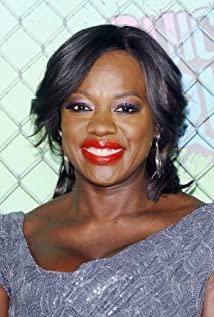In 2000, the famous director Steven Soderberg put the war on the screen and shot the award-winning film "Drug Network". This can be seen as a morale-boosting work for Americans. In fact, he knows that the scale of the war and the complexity of the personnel involved are incomparable in the general sense of war. Just like in the movie, this is not only a war between law enforcement officials and criminals, and between countries, but also between the government and the government. The war between drug users and members of the family. The film’s vision includes two countries. Their judicial machinery and the military, drug dealers, families, schools, and the entire society have touched many corners of the upper and lower levels. Although they are still more complicated than the real situation, they are only for one film. For a two-and-a-half-hour movie, the content and clues are too much. Soderbergh controlled it very well, and directed this complicated war methodically in a limited time. The structure was compact, full of tension, and very beautiful. It not only attracted the eyes of the audience, but also mobilized the brain to think.
The complexity of the movie is first manifested in the structure. The police and drug lord in Mexico, the drug dealers and judicial personnel in the United States, the father of the justice and the daughter of drug addicts, the three scenes constitute the main framework of the story. Although the plots develop independently, However, it is implicitly under the control of drugs, representing different interests, classes and desires, staggering and advancing the plot. The relationship between the story and the characters in each scene is not single. There is a complete drama conflict in a police film or a family ethics film. The characters in each scene form a direct visible tension in each bridge and even each shot. No slack in the details, always in a state of tension. Soderberg’s shots switch between scenes, seemingly leisurely, without quick cuts and jumps, but because of his well-thought-out overall view, he has a good grasp of the editing points between different scenes and stories, so there is almost no cutscene. Every time a scene is changed, it is the most direct way to enter the plot. The plot must have developed at this time. The audience's mind has to keep running to keep up with his rhythm. What happens in a single scene now is due to the potential between the characters. The conflict always affects your nerves. In this way, no matter from the details or the whole, the movie does not give people a sense of messy and dullness, but has been leading you involuntarily to go deeper. For example, at the beginning of the film, a policeman in the Mexican desert caught a drug dealer but was abducted halfway by the sudden army. When the next time it appeared, the military suddenly asked the policeman played by Del Tro to help them. When it appeared for the third time, Del Tro had been with them. The general asked the killer he was looking for to sit in the same bar. The background and process were omitted, and the plot developed rapidly. We soon discovered the secret of the general, which made the plot more complicated. The feelings for Deltro and his partner, and the mutual use of him and the general were also foreshadowed in advance.
The complexity is also manifested in the large number of characters in the play. It is hard to say which of the dozen main characters is heavier. Everyone has their own irreplaceable role, but Soderberg makes almost all the characters appear three-dimensional and plump. Facialization, and full consideration of the audience’s understanding and acceptance capabilities, makes the characters’ emotions close to the experience of ordinary people. Del Tro, who had disappointed us completely, suddenly revealed his lonely heroic character at the end. Before that, he had to endure humiliation and even betray his partner who was born and died, which made us feel the tragic identity and personality of this silent police officer even more. strength. The wife of a drug dealer, played by Catherine Zeta Jones, turned from a lady who would be surprised at the criminal charges against her husband to a shrewd drug lord. The reason is closely related to an important sensational element in Hollywood—family affection. It makes the audience feel that she is worthy of sympathy after all, which is a change that gives people a sense of reality. Douglas is preparing to do a big fight, leading a vigorous anti-drug war. Suddenly the backyard caught fire and he was caught in a family war with his drug addict daughter. This personal war made him understand what kind of enemy he was facing. , With just a cavity of justice, his old fist can't even focus on it. At the press conference, he couldn't speak, he was almost in tears, this kind of public performance mixed with strong personal emotions will definitely impress the traditional American audience with strong family values.
Soderbergh's brilliance is that he is both emotional and always vigilant, and will not let this kind of sentiment overflow and affect people's attention to the serious themes of the film. Most of the shots in the film are mid-to-close shots, and even portable photography, which is rarely seen in mainstream American movies, is used to highlight the subtle expressions and movements of the characters to reflect the documentary style. His shots will not exaggerate the personal emotions of the judge and the drug dealer’s wife like TV news. When Douglas found his daughter who was betraying her body in exchange for drugs, he only gave him a shot of caressing her with tears, and then turned around. Go, even if the sun is shining outside, there is still a blue and dizzy blood-loss world in the eyes of drug addicts glowing with cold metal luster. This is the world of normal Americans, where drugs are rampant, and it is easier for middle school students to buy drugs than to buy alcohol. The Mexican scenes all use yellow filters, even the streets are dusty, and the air is full of lazy summer decay. The yellow color seems to symbolize the control of drugs that various forces are fighting for, and the damage to money. Desire and blood. The strange thing is that it shows the scene of American drug dealers, but the colors are the closest to normal, full and bright, and pleasing to the eye. Why is this? Isn't color a very important symbol in this movie? I thought and thought, and I came to the conclusion that this may reveal to us Soderbergh’s true thoughts, which are more real than the inspiring light tail-as long as people’s desires in a free economic society will not be extinguished, drugs , And other evils will not leave the stage, evil is everywhere, this is the normal state of society.
Soderberg made a blockbuster in Cannes more than a decade ago with a calm and persistent small production "Sex, Panic, and Videotape", but he quickly voluntarily gave up such a production method and style. "Kafka" borrows the corpse of a master to return the soul of suspense. Although it has the heart of the industrial society, it has more black comedy effects; The return of value and the recognition of warmth; after several years of success and failure in commercial films, he finally became a mainstream Hollywood director with "Alian's True Story" and "Drug Network". At last year's Oscars Shang is even more embracing the golden person. "Drug Network" shows us his proficient film skills, his handy control of such a complicated story, he is easy to do, and fascinating. At the same time, he has a serious theme and a strong sense of social responsibility. It is reasonable for the most mainstream film awards in the United States to be awarded to him. .
I know that writing this Hollywood blockbuster more than a year ago is unavoidable. So I checked it before writing and found that there have been very few comments on it in the past year. A great director who started making art films has consciously turned to mainstream development. He is proficient in commercial film shooting methods and pays attention to reality. He is serious but not dull, restrained but not boring. I think such people are not only needed by the United States, but by China. So, even though some dare not visit, I think it is necessary to write about it. Of course, this is a digression.
View more about Traffic reviews











